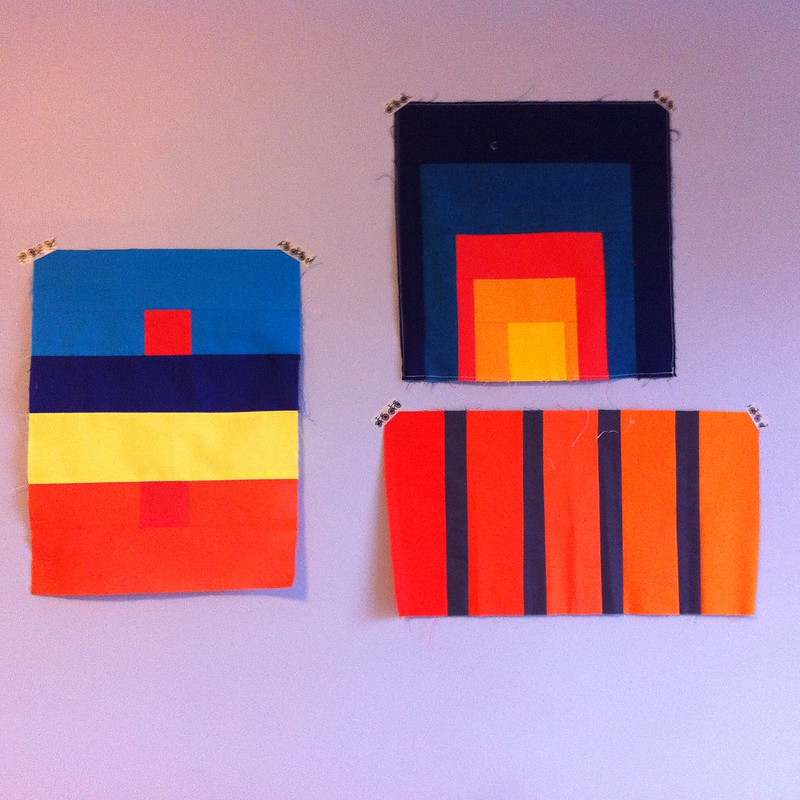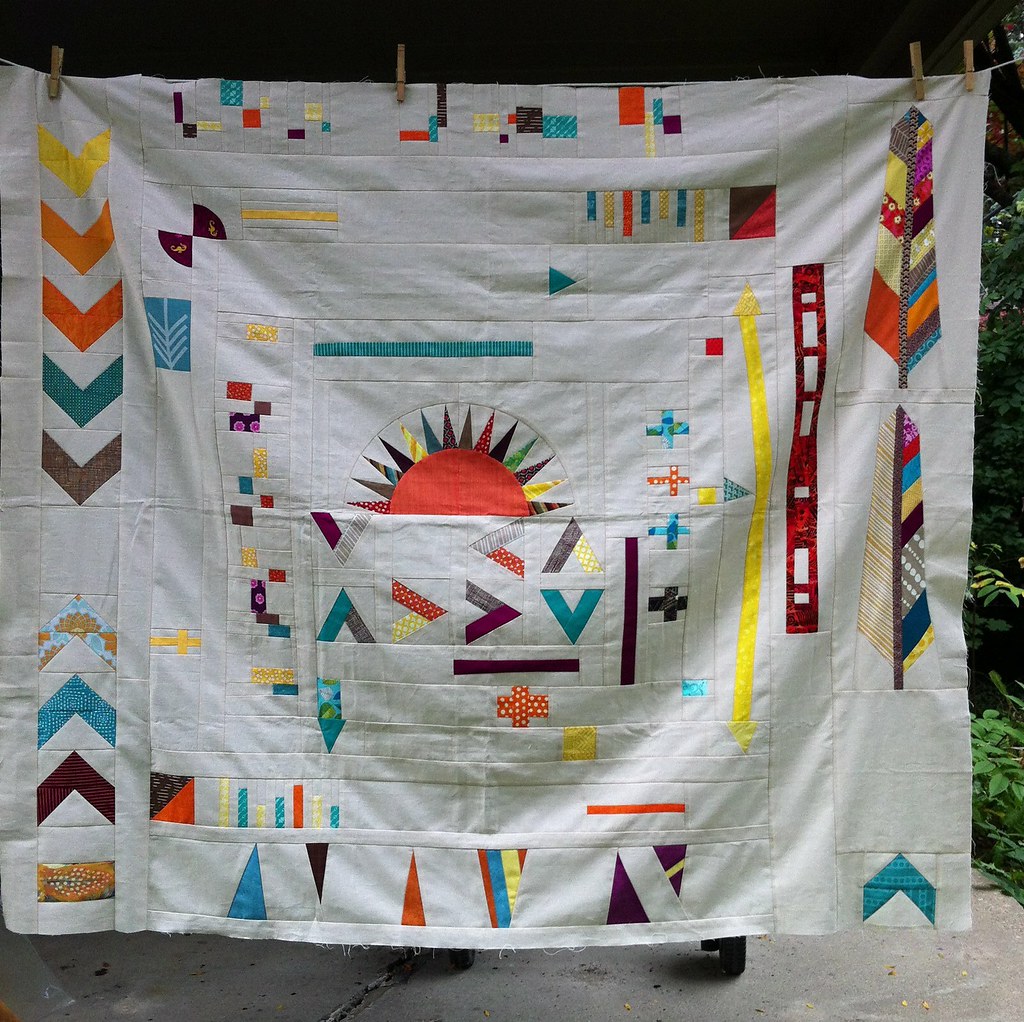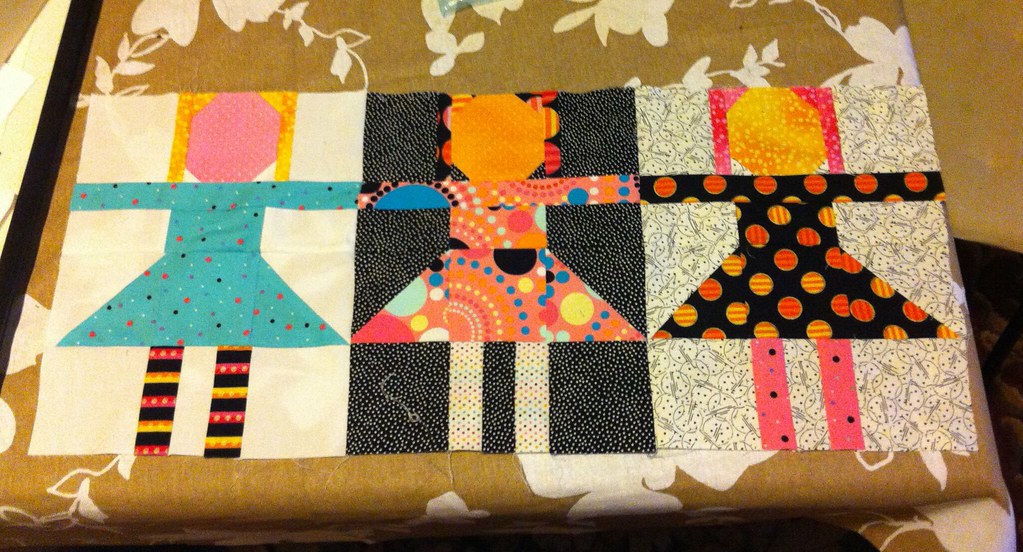
 |
| A block Dorie made for a "Winter Not Christmas" Round Robin quilt |
 |
| Jen's ( of Brave Little Chicken) round robin quilt, the theme is Indian Summer. |
I love having the (loose) constraints each month, whether it's a color scheme or block type or based on an artist's color theory work or a life story, it's a lot of fun to try to fit my own style and ideas into the rest of the quilt. It keeps me learning and practicing new techniques when I find something I think will go perfectly with the rest of the quilt but haven't tried it before. I also get to use fabrics and colors that are totally out of my comfort zone and sometimes find ones that I want to keep working with. The best part is seeing the finished work; you can still pick out each part that the very different quilters have contributed but they blend together to make a beautiful quilt.
 |
| Ashley's block for a "block inspired by a favorite relative" round robin quilt |